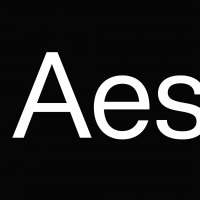Howdy, Stranger!
Categories
- All Categories
- 39 Introductions
- 3.6K Typeface Design
- 764 Font Technology
- 1K Technique and Theory
- 587 Type Business
- 435 Type Design Critiques
- 526 Type Design Software
- 30 Punchcutting
- 132 Lettering and Calligraphy
- 79 Technique and Theory
- 53 Lettering Critiques
- 461 Typography
- 289 History of Typography
- 111 Education
- 61 Resources
- 479 Announcements
- 74 Events
- 104 Job Postings
- 147 Type Releases
- 153 Miscellaneous News
- 259 About TypeDrawers
- 52 TypeDrawers Announcements
- 109 Suggestions and Bug Reports
Options
Width Reduction In Sans-serif Italic Styles
 Michael Jarboe
Posts: 265
Michael Jarboe
Posts: 265
I'm curious to hear thoughts on the idea of width reduction in sans-serif italic/oblique styles. Not so much with serif types as they are naturally reduced in width due to their root in cursive letterforms and handwriting.
I've observed in many sans-serif typefaces that the italic styles are often reduced in width. Process wise it's likely this width reduction occurs before slanting and can often be as little as 95-97%. I understand that optically, this allows the italic styles to closer match the width of the romans being that slanted letterforms are naturally elongated and wider than their roman counterparts.
My curiosity is peaked though as I believe that not all designers utilize this technique, so I've been debating the reasoning of various points of view. Understandably, I don't believe I've seen this technique utilized in any truly condensed typefaces, nor have I seen it in any monospace typefaces. Maybe it is utilized in monospace sans-serif designs that utilize a more true italic where the letteform construction varies greatly from the roman?
For condensed faces of course there is a point of no return wherein the counters are so narrow that it wouldn't be realistic to further reduce the width of the letterforms in an italic. Similarly, the non proportional sidebearing space would increase, albeit subtly, if this technique is used in a monospace face.
Since I have multiple condensed and monospace typeface designs in development, I've found myself at odds with this theory, being that it doesn't seem applicable at large.
I've observed in many sans-serif typefaces that the italic styles are often reduced in width. Process wise it's likely this width reduction occurs before slanting and can often be as little as 95-97%. I understand that optically, this allows the italic styles to closer match the width of the romans being that slanted letterforms are naturally elongated and wider than their roman counterparts.
My curiosity is peaked though as I believe that not all designers utilize this technique, so I've been debating the reasoning of various points of view. Understandably, I don't believe I've seen this technique utilized in any truly condensed typefaces, nor have I seen it in any monospace typefaces. Maybe it is utilized in monospace sans-serif designs that utilize a more true italic where the letteform construction varies greatly from the roman?
For condensed faces of course there is a point of no return wherein the counters are so narrow that it wouldn't be realistic to further reduce the width of the letterforms in an italic. Similarly, the non proportional sidebearing space would increase, albeit subtly, if this technique is used in a monospace face.
Since I have multiple condensed and monospace typeface designs in development, I've found myself at odds with this theory, being that it doesn't seem applicable at large.
Tagged:
0
Comments
So “the amount of ink on the page” remains the same, which gives the impression, en masse, of the same weight in roman and italic, which is more significant than any suggestion that the italic is lighter because of its thinner stem.
For a typical slant of 8°, the stem thins by around 2%, which, if it is even perceptible, is no doubt desirable, as our eyes are accustomed to expect such angled strokes to be thinner. For two reasons: (1) Because vertical stems look better thicker than horizontal, and angled is on the way to horizontal, and (2) Because of our habituation to seeing typographic strokes angled that way being thin, derived from the “broad nib” contrast of traditional serifed type, apparent in A and V etc., and often carried over into sans types with ostensibly even stroke thickness in those letters.
The classic purpose of italics is to emphasize a part of the running text. So it makes sense to be a "kind of different". But usually in a way that emphasizing using regular-italics is slighter than using bold-upright weight.
On the other side, if the font is more display than text, and more oblique than true italics, maybe it makes sense to be "as similar as possible".
So to some extent, it's a matter of decision/concept I guess.
Sometimes the non-humanist italics came out slightly different in width from the roman (Chris’ “eyes have it”), and sometimes I made a point of making them uniwidth.
But the humanist italics were a horse of a different colour.
(This was the method that occurred to me, easier than remembering where my “Four Figure Tables” book was, or looking up a trig value online, which I‘ve never done—or remembering how to perform that kind of calculation anyway, which I haven’t done for 50 years.)
How does the reader benefit from geometric purity of slants?
It's actually nothing ideological (for a change :-) but simply about the practicalities of working on a grid (versus polar coordinates for example). Although you could say that can get ideological pretty quickly... Previously on One Font To Give:
https://typedrawers.com/discussion/comment/49687/#Comment_49687